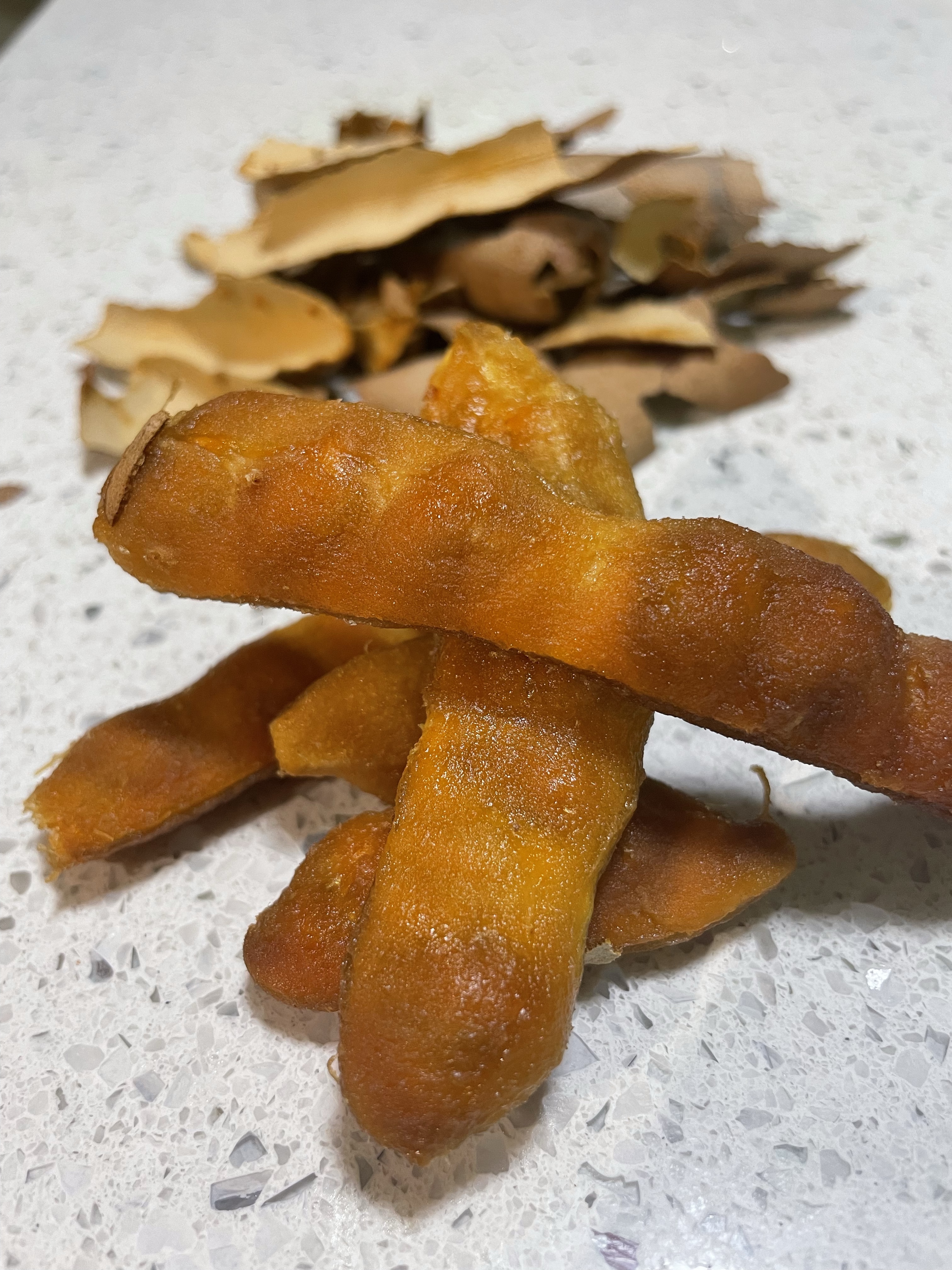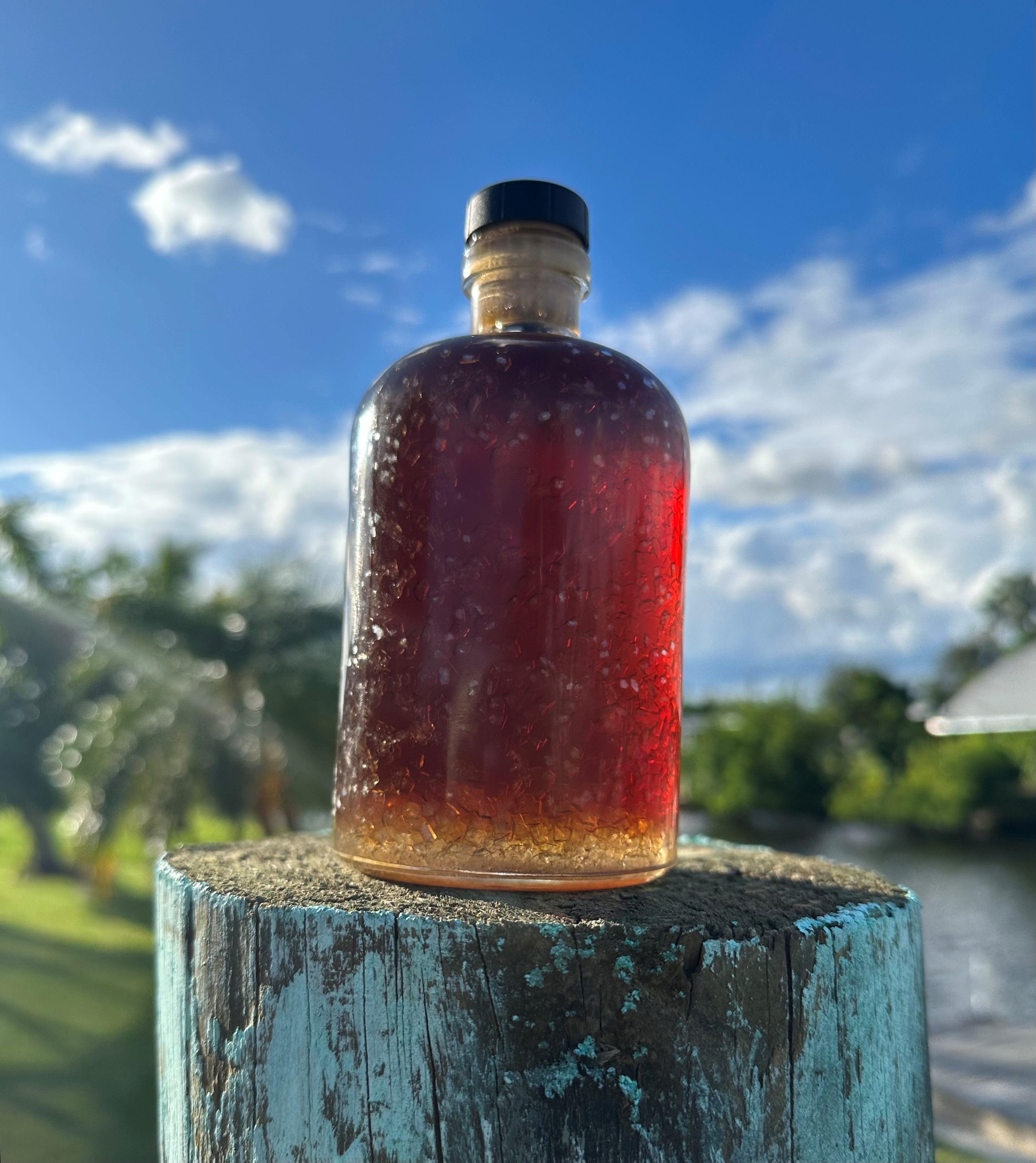Tamarind
We came down to the Florida Keys with another couple to do some jet skiing and snorkeling.




BOTANICAL DESCRIPTION
Evergreen, leguminous tree indigenous to tropical Africa and naturalized in Asia that feature rough, dark grey bark and wide-spreading crowns with arching branches.
Leaves are up to 6 inches long, ferny, even-pinnate, and compound. With 10 to 18 pairs of elliptic-oval, 1 inch long, blue green to pale green leaflets, tamarind leaves have a feathery appearance.
In the spring, small, 5-petaled, pale yellow flowers with orange-red vein appear on short racemes.
The blooms give way to 2-7 inch long, bean-like seed pods that turn from green to a velvety, cinnamon-brown when ripe. Inside this brittle shell is an edible, sweet-sour, brown paste surrounding two or three seeds.

MYTHOLOGY & SYMBOLISM
Many East Asian cultures consider tamarind an embodiment of both yin and yang energy and represent balance and harmony. In some African and Caribbean cultures, tamarind is considered a spiritual food. Tamarind trees, considered “spirit trees”, are said to have deep-reaching roots that reach the underworld, which connects this plant to all planes of existence. It is even said that cutting this tree down without replacing it would be a bad omen for all future crops.
- In the Caribbean, old tamarind trees are believed to have spirits living in them.
- Some African tribes such as the Bambara of West Africa believe that the tree is sacred and symbolizes multiplicity and renewal.
- In Malawi, tamarind bark is soaked with corn and fed to livestock as a way of guaranteeing their return if they are lost or stolen.
- There is Buddhist parable about tamarind seeds as a symbol of faithfulness and forbearance.
- In Myanmar, the tree is considered the dwelling place of the rain god and that it can raise the temperature of the ground beneath it.
- Some South Asians of India will not sleep under one because of the acid it expels during the night. In other regions of Asia, it is believed that evil spirits inhabit the tamarind tree and building a house where one grows is not recommended.
A mature tamarind tree has a severe and imposing appearance. Respected and feared, it has been endowed with values relating to tenacity. It is always green and with its durable wood, acidic leaves and fruits, it is commonly associated with the presence of spirits and djinns. Also, frequently found growing next to termite mounds, it is sometimes seen as a symbol of solidarity under duress.
TRADITIONAL USES
Tamarind paste is high in antioxidants, magnesium, and although high in sugar, is low on the glycemic index. The paste is used in curries, chutneys, sherbets, jams, syrups, sauces, beverages, and is an ingredient in Worcestershire sauce.
Young tamarind leaves are used in South Indian and Filipino cuisine in fresh and dried forms.
Tamarind seed oil has been used in commercial applications such as paint and varnish and the tartaric acid containing pulp is a traditional metal polish.
A black dye can be produced from the bark and the wood is prized for its durability and being termite resistant.
To make tamarind paste. . .
Remove and discard the shell from the pods.

Soak the pulp covered pods in hot water for at least 1 hour to soften so you can easily separate the seeds.
In a small pot simmer the pulp and water mixture for 15 minutes, adding more water if needed. Then push the mixture through a sieve to isolate any fibrous material.
I had only picked up a handful of pods while jet skiing in the Florida Keys so it did not make much!

But it was enough to make a delicious Tamarind BBQ Sauce for meatballs.

References
Cleveland Clinic. (2023, May 9). Why tamarind just might be your new favorite fruit. https://health.clevelandclinic.org/tamarind/
Gilman, E.F, Watson, D.G., Klein, R.W., Koeser, A.K., Hilbert, D.R. & McLean, D.C. (2019, March 28). Tamarindus indica: Tamarind. University of Florida Institute of Food and Agricultural Sciences Extension. https://edis.ifas.ufl.edu/publication/ST618
Marche Afritibi. (n.d.). Tamarind (fruit of the tamarind tree). https://afritibi.com/en/produit/tamarind/
Missouri Botanical Garden. (n.d.). Tamarindus indica. https://www.missouribotanicalgarden.org/PlantFinder/PlantFinderDetails.aspx?taxonid=280489#:~:text=Tamarindus%20indica%2C%20commonly%20known%20as,subtropical%20areas%20around%20the%20world.
Readal, Maryann. (2020, November 2). Tamarind: Herb of the month. The Herb Society of America Blog. https://herbsocietyblog.wordpress.com/tag/tamarind-legends/
Sène, E.H. (n.d). Trees, forests, beliefs and religions in Sahelian West Africa. https://www.fao.org/3/y9882e/y9882e10.htm#:~:text=The%20tamarind%20tree%2C%20Tamarindus%20indica,presence%20of%20spirits%20and%20djinns
Tamarind. (2023, September 1). In Wikipedia. https://en.wikipedia.org/wiki/Tamarind





Leave a Reply